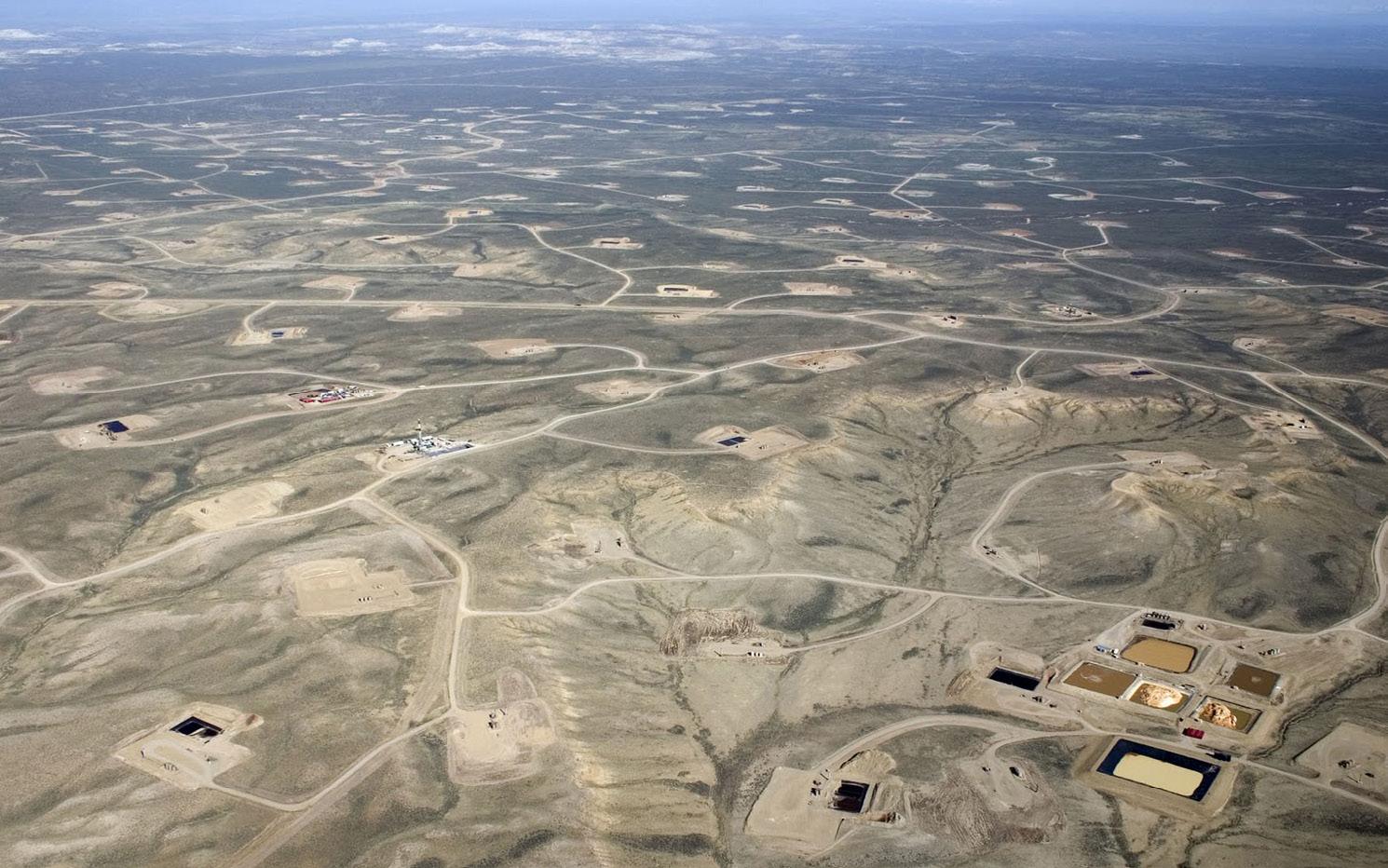
6 minute read
Energy Review
By Tsvetana Paraskova
The US oil and gas sector saw growth stalled in the first quarter of 2023, the latest closely-followed survey showed, while the industry continued to call for eased permitting processes to unblock the development of critical energy projects, including in oil, natural gas, and renewable energy.
Growth in US oil and gas production and drilling activity stalled in the first quarter this year amid surging costs and worsening outlooks, according to the latest Dallas Fed Energy Survey on business conditions in the major shale basins in Texas, New Mexico, and Louisiana.
US shale growth stalls
The business activity index—the survey’s broadest measure of conditions facing Eleventh District energy firms—stood at 2.1 in the first quarter, a sharp drop from 30.3 in the fourth quarter of 2022. The near-zero reading indicates activity was largely unchanged from the prior quarter, a break from the more than two-year stretch of rising activity.
Production of oil and natural gas continued to rise, but at a slower pace compared with the fourth quarter, executives at exploration and production (E&P) firms said in the survey. Both the oil production index and the gas production index remained positive but declined to 10.5 from 25.8 and to 7.4 from 29.4 in the fourth quarter, respectively.
Costs jumped for a ninth quarter in a row, oil and gas firms said.
However, the index for supplier delivery time moved into negative territory for the first time since the fourth quarter of 2020, signalling that it now takes less time to receive materials and equipment compared to the prior quarter. The index for delivery times for oilfield services firms fell to zero from 20.0, suggesting delivery times for these firms are no longer increasing, according to the survey.
Outlooks for the future worsened in the first quarter of 2023 compared to the fourth quarter of 2022. The overall outlook uncertainty index increased by 23 points to 62.6, suggesting heightened uncertainty regarding outlooks. Sixty-eight per cent of firms surveyed reported greater uncertainty.
According to the executives in the survey, the price of West Texas Intermediate (WTI) will average around $80 per barrel by the end of 2023, with responses ranging from $50 to $160 per barrel. Survey participants expect Henry Hub natural gas prices of $3.43 per million British thermal units (MMBtu) at year-end. For reference, WTI spot prices averaged $68.51 per barrel during the survey collection period, and Henry Hub spot prices averaged $2.23 per MMBtu.

E&P firms also reported in the survey that they need $62 per barrel on average to profitably drill a new well, higher than the $56-per-barrel price when this question was asked last year. Breakeven prices in the Permian Basin average $61 per barrel, and are $9 a barrel higher than last year. Despite recent oil price declines, most firms in the survey say they can profitably drill a new well at current prices.
Going forward, firms expect that cost inflation and the health of the global economy will be the two factors that will have the most influence on company profitability this year. Each of these two factors were selected by 30% of executives as having the greatest influence on the profitability of their firm in 2023.
Commenting on the business conditions in the US shale patch, one E&P executive said, “The dramatic increase in 2022 inflation has severely negatively impacted project economics.”
Another one commented, “Regulatory uncertainty continues to be a headwind. Inflation pressures appear to be moderating slightly, but we still have a long way to go.”
A third executive noted, “Mixed messages sent by the current administration respecting the necessity for fossil fuel production, scarcity of labor, increased cost of materials and supplies, domestic and foreign political risk, demand volatility and economic uncertainty domestically have each contributed to an environment that is difficult to work and make plans in going forward.”
“In addition to those factors, the increased cost of capital has negatively impacted the ability to participate in projects that could enable the organisation to grow.”
Among oilfield services providers, one executive said for the survey, “Regulatory uncertainty is a major overhang. Labor remains tight, with continued wage pressures. Supply-chain issues remain.”
Another executive at oil and gas support services firms said, “The likelihood of a recession has increased. Government at all levels is out of control. Regulation is killing the nation. Environmental issues are overblown to the point of the absurd.”
US Gulf of Mexico lease sale shows optimism for region
The US Administration held at the end of March Gulf of Mexico Lease Sale 259, which generated $263.8 million in high bids for 313 tracts covering 1.6 million acres in federal waters of the Gulf of Mexico. Lease Sale 259 offered approximately 13,600 unleased blocks, approximately 73 million acres, in the Gulf’s Western, Central, and Eastern Planning Areas.
As many as 32 companies participated in the lease sale, submitting $309,798,397 in total bids, the Bureau of Ocean Energy Management (BOEM) said.
The biggest international oil firms, including ExxonMobil, Chevron, bp, Shell, and Equinor, submitted the highest number of total bids.
The amount of activity surpassed the previous lease sale spend in 2021, demonstrating optimism for the region, Wood Mackenzie analysts said
High bids increased by $72 million, or by 38%, compared to the total lease sale spend in 2021, and the high bid amount was the highest since 2019, according to the energy consultancy.
Bids/acre for deepwater blocks also increased, by 22% to $216 per acre.
“The Majors participated in a big way at the lease sale, bidding on 70% of the 313 blocks and their high bids were 77% of the total. We expected to see an uptick in the activity as it has been almost 18 months since the last lease sale,”
“The Majors participated in a big way at the lease sale, bidding on 70% of the 313 blocks and their high bids were 77% of the total. We expected to see an uptick in the activity as it has been almost 18 months since the last lease sale,” said Justin Rostant, principal research analyst at Wood Mackenzie.
Chevron was the most aggressive bidder with $104 million in high bids, more than all the other Majors combined. Chevron also stood out in the Atwater Valley protraction area, bidding on 28 blocks, Rostant noted.
The other US supermajor, Exxon, also bid on many blocks.
“ExxonMobil added 69 blocks on the shelf, adding to the 98 blocks it acquired at the last lease sale. The Major has plans for a CCS project in the Houston Ship Channel area and these bids are likely in support of this project, but the regulatory process for using oil and gas leases for carbon storage is uncertain,” Rostant commented.
Industry calls for eased permitting, again
While majors bid for Gulf of Mexico tracts and shale executives noted the slowdown in production growth in the key shale basins in Texas, New Mexico, and Louisiana, the oil lobby in the United States continued to call on the US Administration to unblock permitting for energy projects.
The American Petroleum Institute (API) urged the Biden Administration to address the permitting process that is halting US energy development. In a comment letter submitted to the White House Council on Environmental Quality (CEQ), API Director of Climate and ESG Policy Jennifer Stewart outlined the harmful provisions of CEQ’s Interim Guidance on Consideration of Greenhouse Gas Emissions and Climate Change under the National Environmental Policy Act (NEPA).
The American Petroleum Institute (API) on April 10 urged the Biden Administration to address the permitting process that is halting US energy development. In a comment letter submitted to the White House Council on Environmental Quality (CEQ), API Director of Climate and ESG Policy Jennifer Stewart outlined the harmful provisions of CEQ’s Interim Guidance on Consideration of Greenhouse Gas Emissions and Climate Change under the National Environmental Policy Act (NEPA) and detailed how this guidance could further delay the development of critical energy projects – from oil and natural gas to renewables. API called on the Administration to rescind the interim guidance.
API supports the careful consideration of potential environmental impacts and shares the Administration’s goal of reducing greenhouse gas emissions, API’s Stewart said in the comment letter

“However, we do not believe that the Interim Guidance helps agencies advance these goals in a lawful or effective manner,” Stewart added.
The scope of NEPA reviews has expanded dramatically since NEPA was enacted more than fifty years ago.
“This expansion has unfortunately lengthened review times, fostered confusion among project sponsors and regulators, and generated regulatory uncertainty,” Stewart wrote.

“Unless the NEPA process is reformed, this Administration’s efforts to invest trillions of dollars in infrastructure improvements and environmentally beneficial projects may be compromised.”










